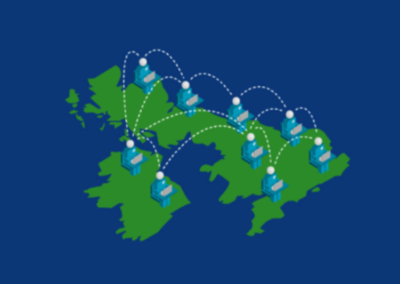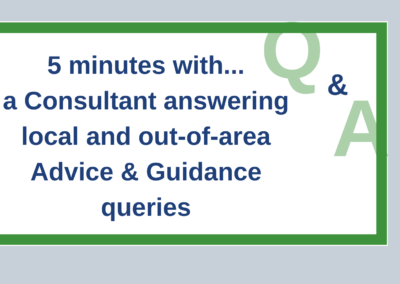‘Consultant Connect is an educational tool that optometrists can use to help develop their experience managing patients.’
In April 2024, the national guidelines WGOS 4 came into place in Wales, which changed how clinicians seek advice and refer patients within optometry. The WGOS 4 guidance allows lower risk patients to be cared for within primary care who would have previously been referred to secondary care. This reduces the number of patients needing a hospital clinic appointment and ensures all patients receive the most appropriate care. WGOS 4 utilises optometrists with higher qualifications in glaucoma and medical retina to filter and monitor patients who would otherwise be under the care of hospital eye services. Previously, an optometrist may have referred a patient to the hospital for monitoring. Now, this patient would be referred to a WGOS 4 optometrist and, following the filtering appointment, they might be discharged back to their Primary Care optometrist for management.
We spoke with Sally Hodson, Optometric Advisor for Hywel Dda University Health Board (HDUHB) and Optometrist, who triages referrals into the hospital eye service. Sally explained how the introduction of WGOS 4 has impacted clinical ways of working and how Consultant Connect has supported.
HDUHB Optometry stats since launch*:
Three pathways available within diabetic retinopathy, glaucoma, and urgent IVT | More than 350 messages sent across the three pathways | Messages responded to within one working day on average
Before the implementation of WGOS 4, were all glaucoma patients automatically referred to a specialist in secondary care?
‘Yes, although we had a long-running glaucoma referral refinement scheme, there wasn’t a defined pathway, and clinicians didn’t need a higher qualification to monitor patients. For WGOS 4 glaucoma pathways, three levels of qualifications determine the level of patient care a clinician can provide. Only clinicians with the higher two levels are allowed to filter patients out. The highest qualification means a clinician can monitor a patient with a glaucoma diagnosis, the middle qualification allows patients on treatment for ocular hypertension or suspected glaucoma to be monitored, and the lowest qualification means a clinician can monitor those who have been referred for elevated intraocular pressure or suspected glaucoma, but no treatment has been needed. So, there are really clear boundaries of what patients the optometrists can care for. Under WGOS 4, the clinicians monitoring patients on the medical retina pathway need a professional certificate in medical retina in addition to their usual optometry qualifications. Following the WGOS 4 implementation, we’ve been transitioning our existing pathways where data was already captured. Our glaucoma pathway went live in September 2024, and the medical retina pathway was launched soon after in December.’
How has Consultant Connect helped with this process?
‘We’ve been supported by Consultant Connect’s services since 2020. Previously, we used Consultant Connect to securely send images and reports, which the hospital could remotely review. Now, we use it to securely transfer patient information, and OCT and fundus images. We’re aware that this level of management is new to optometrists, and Consultant Connect is also helpful in supporting optometrists in their decision-making. If they need to, optometrists can send a patient image to ask if a referral is necessary. Then, the next time they see a patient with the same signs or symptoms, they might not feel they need to ask for support. So Consultant Connect is an educational tool that optometrists can use to help develop their experience managing patients.
‘I also use it in practice, and it’s really easy. Some clinicians attach files from their desktop, but I like to use the Consultant Connect App to take images in the moment and forward them. The ability to attach files in different ways and get fast and thorough feedback is so helpful. I use it for Wet AMD patients, and the input is so quick and responsive.’
What does the future of optometry pathways look like?
‘The next WGOS 4 pathway we are developing is hydroxychloroquine screening to aid with the Secondary Care waiting list. Outside of WGOS 4, we are bringing in a service that any optometrist in HDUHB can use, irrespective of their qualifications, to refer a patient to a specialist for remote review. This is because there wasn’t a good way of highlighting patients who were overdue for their appointments and experiencing new symptoms, or felt that their condition was deteriorating, and had delayed treatment. So this means that secondary care can determine whether they need to expedite a patient’s appointment and can prioritise the right patients to ensure those most in need can be seen as soon as possible.’
* correct as of May 2025
You can download a PDF of the case study, or if you have any questions about this service, please get in touch on 01865 261467 or at hello@consultantconnect.org.uk.




